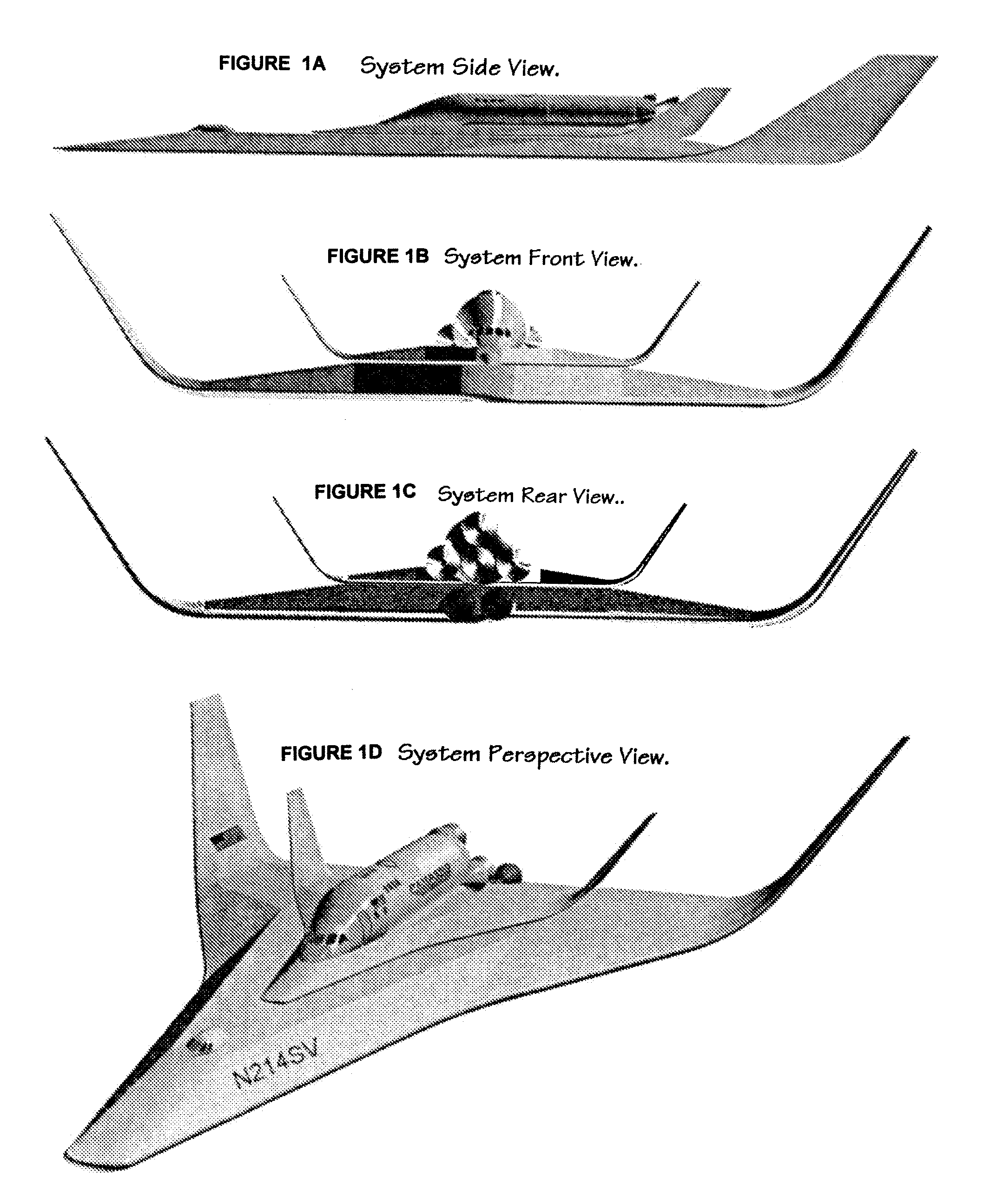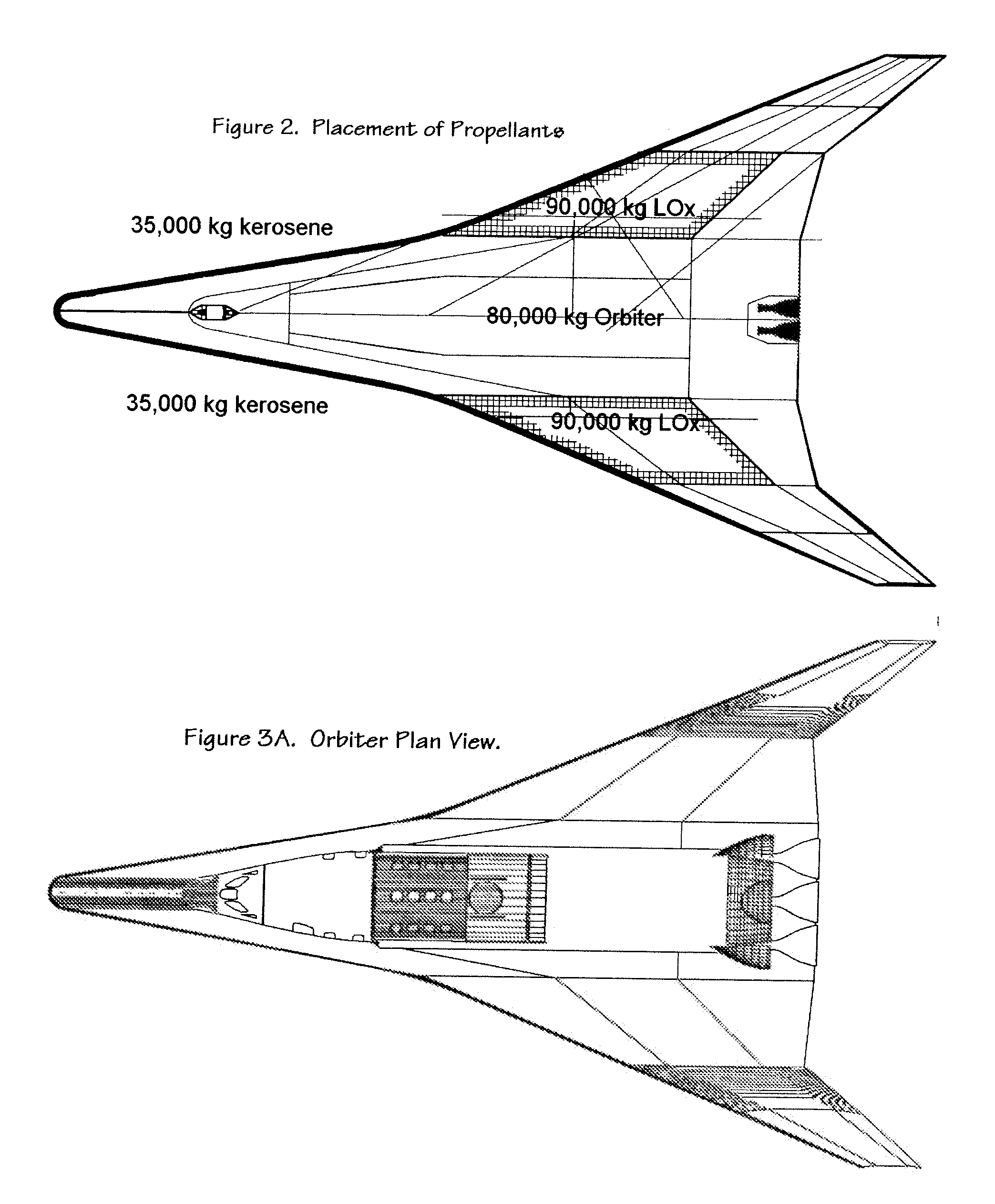Rocket-powered kite plane for gentle climb and acceleration to extreme staging altitudes
a kite plane and kite technology, applied in space shuttles, transportation and packaging, space vehicles, etc., can solve the problems of reducing rocket propulsion efficiency, requiring extra propellants, and compromising aerodynamic efficiency, so as to reduce aerodynamic loads, enhance flight ability, and reduce mass.
- Summary
- Abstract
- Description
- Claims
- Application Information
AI Technical Summary
Benefits of technology
Problems solved by technology
Method used
Image
Examples
Embodiment Construction
[0016]With reference to the various figures, wherein the numerals designate like components throughout all the several figures, the invention finds particular application in this preferred embodiment. This preferred embodiment is a TSTO space transport, comprising a carrier as the first stage and an orbiter as the second stage.
[0017]The carrier features a large, 1000 m2 wing that is significantly larger than might otherwise be considered for a space launch application employing horizontal takeoff and landing. This unusually large wing results in a relatively gently ride to the staging point for the orbiter, the structure of which benefits greatly from being designed for mechanical and thermal loads typical of a low planform reentry. Unlike other horizontal takeoff or vertical takeoff space transports, the orbiter stage does not experience the large structural and panel loads normally encountered in climb and acceleration to the staging point. This relief, in turn, permits a larger o...
PUM
 Login to View More
Login to View More Abstract
Description
Claims
Application Information
 Login to View More
Login to View More - R&D
- Intellectual Property
- Life Sciences
- Materials
- Tech Scout
- Unparalleled Data Quality
- Higher Quality Content
- 60% Fewer Hallucinations
Browse by: Latest US Patents, China's latest patents, Technical Efficacy Thesaurus, Application Domain, Technology Topic, Popular Technical Reports.
© 2025 PatSnap. All rights reserved.Legal|Privacy policy|Modern Slavery Act Transparency Statement|Sitemap|About US| Contact US: help@patsnap.com



